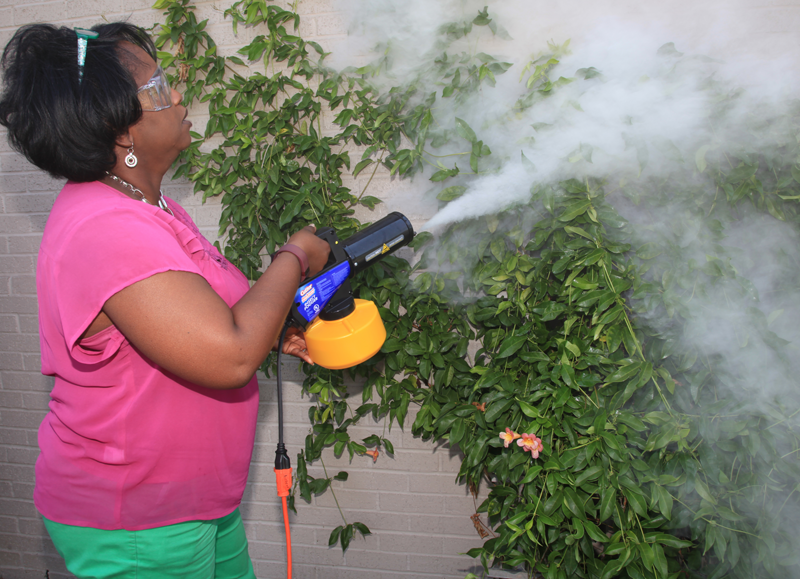This year my wife and I worked all spring to turn our backyard into a flowery paradise. We installed drip irrigation, planted new plants (including a bunch of perennials for attracting bees and butterflies) and mulched everything against the coming drought of summer.
Now that summer’s here, however, the mosquitoes have decided that since everything’s so nice, they want to be in charge. In fact I believe every mosquito on the block knows about our backyard, making it difficult to go outside for even a few minutes without repellent.
You see, clearing your own yard of mosquito breeding sites (as I have done) doesn’t guarantee a mosquito free yard. So how do you take back your yard? One quick fix that a lot of people are unaware of is the thermal fogger, available through most hardware and garden centers.

A thermal fogger in use. Apply fogs in the early morning or evening, when wind is low and bees are less active. Focus on thick foliage, shrubbery and tall grass where mosquitoes are most likely to hide.
Thermal foggers use heat from a propane burner or electricity, to heat a coil that turns certain oil-based insecticide formulations into a dense smoke of very small particles (10-25 microns–1/10 the width of a human hair). The small size of these particles allows them to hang in the air long enough to kill flying mosquitoes. The small size is also effective for penetrating foliage to kill mosquitoes resting in hidden locations.
Thermal fogging is easy to do, and relatively fast. In my experience, I get several hours to a day or more’s relief from mosquito bites when I fog my backyard–plenty of time for that barbecue, birthday party or wedding reception.
The signature smoke from thermal foggers has its good and its bad points. On the good side, you can see exactly where the insecticide goes and direct it where needed. On the other hand, depending on the wind, the smoke may drift beyond your yard. It’s a good idea to alert the neighbors before fogging your yard, or you might be seeing the fire truck pull up in your front yard. Also, not all neighbors will be pleased by unexpected mosquito insecticide drifting into their backyard.
So what are the risks of fogging? Risks to humans and pets are very low with the common over-the-counter insecticides sold for fogger use. But I find few good studies on the impacts of consumer fogging machines on beneficial insects. I think it’s safe to say that there likely are some temporary impacts on the smaller beneficials like parasitoid wasps, and possibly the smaller bees. But these insects are also typically highly mobile and should be replaced by other beneficial predators and pollinators quickly. I believe it unlikely that larger butterflies and bees will be harmed by the low exposure rates used in mosquito fogging. Although I am still assessing, I’ve not seen any noticeable impacts of occasional fogging on the larger insects I love to see in my garden.
Mark the term “occasional”. Fogging for mosquitoes is not something I do regularly in my yard (though my vengeful side may want to do it more often). I reserve my fogging ventures to once or twice a summer, and only when I’m expecting guests or planning a special outdoor event. This way I can enjoy my pollinator and butterfly gardens and get my quick mosquito fix when I need it.
The rest of the time insect repellent works well. And I am enjoying our newly planted gardens, despite the mosquitoes.
Reminder: Mosquito season and the risk of mosquito borne diseases kicks into high gear this month. So don’t neglect the repellent and checking your backyard to make sure you’re not the neighborhood source of mosquitoes.
